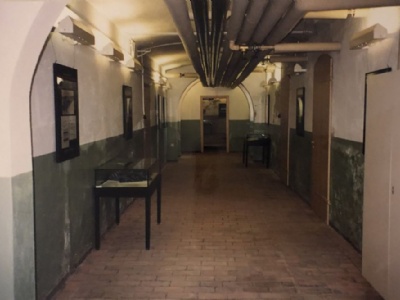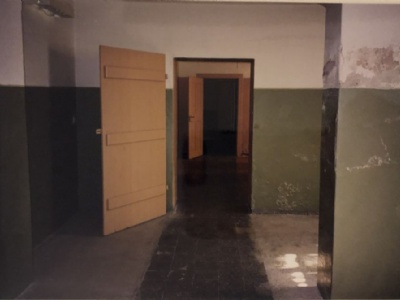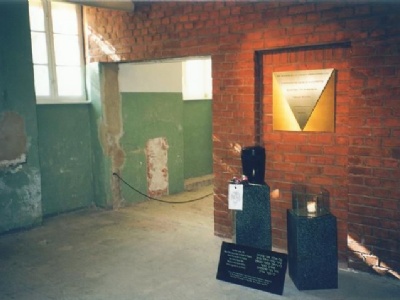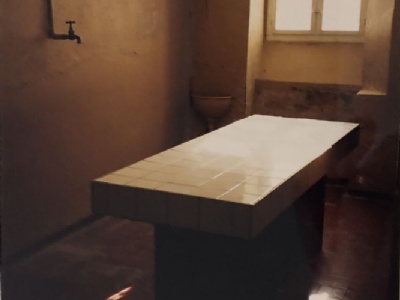Bernburg
When the first euthanasia centre in Brandenburg was dismantled in 1940, the Nazis moved the operation to the Bernburg mental hospital, whose purpose now became twofold. Partly as a mental hospital and partly as an euthanasia centre. The choice of Bernburg was partly due to the fact that since 1875 it was already an existing mental hospital. This gave the Nazis the opportunity to hide euthanasia in official mental health care. Bernburg’s geographical location also contributed to the choice, and finally, it was in a small community where the killings of mentally and physically disabled german citizens could continue relatively undisturbed. The Nazi euthanasia programme (T-4 programme) was not entirely uncontroversial among the German population.
They could not conduct euthanasia openly, so therefore the killings at Bernburg were conducted under a false organization called the Gemeinnutzige Stiftung fur Anstaltspflege (Foundation for institutional welfare). T-4 confiscated the hospital’s basement and converted it into a killing center with locker rooms, gas chambers, corpses/obduction rooms and a crematorium. The head of Bernburg’s euthanasic center was Brandenburg’s former head Dr. Irmfried Eberl. He later became Treblinka’s first commandant. The staff working at Brandenburg also followed to Bernburg and thus the experience was in place right from the start.
As in the other five euthanasia centers, carbon monoxide gas was used a method of killing. The patients were murdered in a fourteen-square-metre gas chamber that was camouflaged as a shower room. The first people were murdered in november 1940 and until the official euthanasia was stopped in august 1941. According to Nazi documents, 8601 people were murdered in Bernburg. Officially, the people had died of tuberculosis, pneumonia or some other disease that was difficult to cure at that time and therefore suitable as a cover for the real cause of death. After the T-4 program was stopped, operations in Bernburg continued under a program called 14f13. This meant that about 5,000 prisoners from concentration camps were murdered in Bernburg.
During the entire time that euthanasia was going on in Bernburg, other mental health services continued on the upper level. Several of the staff who served in the T-4 program in Bernburg later served in one or more of the three Operation Reinhardt extermination camps (Belzec, Sobibor and Treblinka) established in occupied Poland during the war. In 1943 the technical equipment (gas pipelines and crematorium) was dismantled and the personnel moved to Poland. Of the more than 40 people who served in Bernburg, few were brought to justice and those who were brought to justice were usually acquitted.
Current status: Preserved with museum (1999).
Address: Olga-Benario-Strasse 16, 06406 Bernburg (Saale).
Get there: Bus from the Central station.
Follow up in books: Friedlander, Henry: The Origins of Nazi Genocide – From euthanasia to the final solution (1995).





There were many citizens who sincerely believed that Hitler didn’t know about the nazi euthanasia, at least its scope. Although Hitler signed an order to help the terminally ill to a merciful death, he did not speak publicly about it in direct terms of killing sick people. If the Führer only knew, was an expression that existed among people and aimed that if Hitler knew about euthanasia, he would stop it immediately. He did too, albeit for quite different reasons, and only the official T-4 program. The unofficial euthanasia that completely took over, Hitler had no objection about.